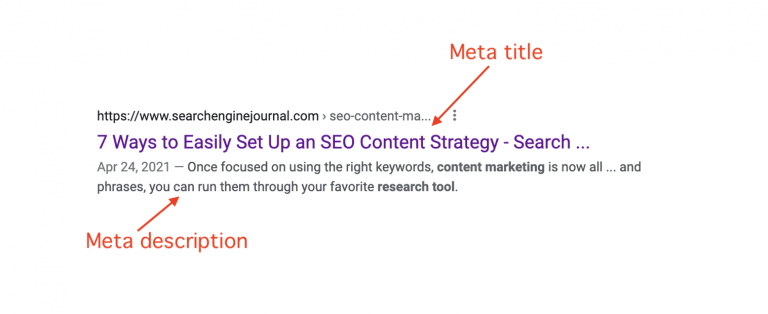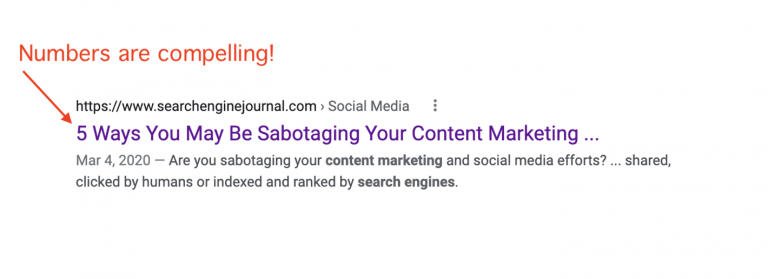SEO is a huge driver of business success. After all, when you appear in search with content that resonates with readers, it helps increase visibility, drives traffic, and boosts conversion rates.
And yet so many people struggle with actually writing good content for SEO.
There was a time when the way to get Google’s attention was by filling content with keywords that might match what people were searching for online.
SEO was less about creating content people could use and more about appealing to Google’s algorithms.
Today, SEO has shifted from writing for machines to writing for people.
By creating useful, engaging content, businesses can more effectively meet the needs of their audience and generate leads and sales growth.
Let’s learn how.
SEO: A Constant Evolution
The introduction of the internet significantly changed the face of consumerism.
With so much information at their fingertips, today’s shoppers are able to do more research for themselves.
This empowers them to be more discerning about the products they buy and the companies they buy from.
Consumer needs and expectations are constantly changing, and as a result, so is SEO.
Search engines want to deliver the best possible experience for their users.
The more Google learns about its searchers, the more it adjusts its algorithms to meet their needs and expectations.
That’s why, while the basic principles of SEO remain fairly constant, the rules for developing effective SEO are continually evolving.
To create content that maximizes your SEO opportunities, you must stay on top of the latest standards for optimal success.
10 Essential Elements for Stellar SEO Copy
Although SEO is ever-changing, with some adaptability and research you can stay in touch with consumers’ expectations and how they’re driving Google’s algorithms.
This will help you create quality content that your users (and search engines) will appreciate.
When writing for SEO, keep these ten content standards in mind.
1. Nail Meta Content
Meta content is like the content teaser you find on the back cover of a book.
It gives readers a sneak peek about what they can expect to find inside.
It can also be the deciding factor in whether the reader will continue to dive in, or put it back on the shelf and reach for something else.
Sometimes, developing great SEO content is simply a matter of developing fresh meta information.
Good meta should follow these rules:
Maximize Your Characters.
Get the most out of this prime real estate. While information should be short and sweet, use all the space you can to draw the reader in.
A great meta description will fall between 50-155 characters before it runs the risk of being shortened by Google. Share as much information as you can to entice the reader to click on your information.

Make It Actionable.
Remember the old circus barkers who would yell, “Ladies and gentlemen, step right up! Don’t miss the greatest show on Earth!”
Channel them when you craft your meta content. This is your opportunity to invite people to see what you have to offer. It should be direct, motivating, and drive people to act.
Incorporate Your Focus Keyword.
When the meta description contains the search keyword, Google is more likely to feature it in the search listings. This makes your link more appealing to users and increases the likelihood they’ll click on it and visit your page.
2. Write for Both People & Machines
You know that saying, “If mama ain’t happy, ain’t nobody happy?”
That’s the relationship between consumers and search engines.
If the users aren’t happy, then neither is Google.
In today’s SEO rules, people come first.
By writing content that meets their specific needs and resonates with them, they’ll enjoy a much more satisfying experience.
This reflects well on search engines because they provided the most relevant information possible.
That’s why content that pleases readers also boosts SEO and drives SERPs.
So when you write for people first, you’re simultaneously writing for the machine.
To guide users through your sales funnel, you must deliver content that people want to read.
3. Provide Value
This leads us to our next point: SEO success hangs heavily on the fact that you provide your readers with something of value.
People turn to the internet for two reasons: they have a problem that needs a solution, or they have a question that needs an answer.
Your mission is to provide that solution or deliver that answer.
For optimal positioning in the SERPs, you must write valuable, in-depth content that eases your readers’ pain.
People are actively seeking reliable resources on the web and chances are, you’re not the only business offering your solution.
To grab (and keep) your readers’ attention, you must create compelling, informative content every time.
The more value you provide, the more trust you’ll build, and the deeper relationship you can establish.
This can bring more leads, more revenue, and a stronger online presence.
Tip: The more resources you can provide your users, the better their experience will be. When writing content, include images, relevant long-tail keywords, and user reviews to set yourself apart from your competition.
4. Tell a Good Story
Storytellers have been drawing in audiences for centuries.
When you approach content writing as a storyteller, you can capture reader attention and bring them closer to your brand.
Consider these elements of storytelling when writing for SEO.
The reader is the protagonist. Even as a kid, we loved being the hero of our bedtime stories. When you write a story with the reader in mind, they’re more invested in the outcome. Engage your audience by writing for them.
Everyone loves suspense. Think about how the cliffhanger ending of a good chapter makes you turn the page. When you hint at what’s around the corner but don’t reveal everything up front, you compel people to keep consuming your content.
And THEN what happened? Every story needs a climactic turning point that takes the reader in an unexpected direction. Write content that includes some surprises along the way.
Write for your brand. Remember that the ultimate reason for your SEO content is to attract people to your brand. Don’t get so wrapped up in your story that you forget your main purpose.
5. Write Powerful Headlines
You’ve done a great job creating useful content that readers would love, and Google has rewarded you with good search rankings.
But for some reason, you’re not getting any clicks.
What gives?
Take a close look at your headlines. Chances are, they’re not enticing people to read your content.
It’s easy to get so wrapped up in perfecting the meat of your content that you neglect optimizing its headlines as well.
But keep in mind, when your articles show up in Google’s search listings, they’re going to be listed among dozens of others.
You have to stand out from the crowd, and a powerful headline is the way to do that.

Headlines are the first impression people have about your content.
If your headline isn’t compelling, then they’ll assume your content isn’t, either.
Create powerful headlines to boost click-through rates and gain more viewership.
Tip: I’m a big fan of the Advanced Marketing Institute Headline Analyzer. I’ve noticed that blogs whose titles rank 40-50% on their scale outperform all others.
6. Refrain from Keyword Stuffing
In the early days of SEO content development, keyword stuffing was a thing.
Google’s algorithms relied heavily on how many keyword matches a page could provide, so writers would cram as many keywords into the content as possible.
Often, there wasn’t any rhyme or reason to them. Sure, they didn’t make sense in the context of the article, but they were in there!
Thankfully, now that there’s a greater emphasis on useful content, this abuse of keywords isn’t as prevalent. However, keyword stuffing still exists – just not the way it once did.
It’s crucial to keep your readers front of mind when developing your SEO content.
What would they find most useful?
In today’s SEO, relevance is most important. Keywords can be used to help deliver valuable content.
7. Increase Readability
Part of creating a positive user experience is writing content that can be easily read.
Readability plays a big role in user engagement. If someone encounters huge blocks of non-stop text, chances are they’re going to bounce.
Keep readers engaged by increasing your content’s readability.
We live in a “skimming” society where people don’t want to invest their time reading content that doesn’t bring value.
Format SEO content with shorter sentences. Break up long paragraphs. Use headers, bulleted lists, and white space to compel readers onward.
The easier your content is to read, the more likely users are to consume it in its entirety.
8. Incorporate Multimedia
Not only do you want to create material that people want to read, but it must be easy to digest.
It should be highly engaging and encourage visitors to stay on your site for longer periods of time.
This allows you to build more meaningful relationships with your audience while boosting your SERPs.
A great way to achieve this is by incorporating multimedia into your SEO content.
Videos, photos, infographics, and diagrams are a visually stimulating way to deliver educational information.
They help to capture your audience’s attention and make your material more memorable.
Multimedia posts are also more likely to be shared by your viewers.
How many times have you received a video or image in an email forwarded by your friends and family?
People love to share engaging content. Use this to your advantage.
9. Include Social Share Buttons
Speaking of sharing information, one of the easiest and most effective ways to promote content sharing is through social media.
Social networks have changed the way people interact on a daily basis.
Direct messaging, real-time commenting, and reaction emojis feed into our society’s desire for instant feedback and communication.
By including social share buttons in your SEO content, you’re not only connecting with your audience by bringing content to the places where they spend their time.
You make it easy for them to pass your information along to their own social contacts.
Social share icons are buttons on your page that typically create an automatic Facebook status or Tweet when readers click on them.
This takes all the work out of your audience having to draft their own post. They can simply share your message with the click of a button.
This can broaden your reach exponentially and attract a whole new audience of like-minded consumers who may also be interested in what you have to offer.
10. Track Your Progress
The only way to gauge the effectiveness of your SEO content strategy is to track its progress.
Metrics are key to revealing what aspects of your plan are working and what needs improvement.
If you’re not monitoring your results, you’ll have no way of knowing where you are in meeting your goals.
There are tons of useful tools available to help track your progress.
From providing relevant keywords to checking for duplicate content, there are lots of ways to ensure your SEO content is effective and resonating with your audience.
Improving Your SEO, One Piece of Content at a Time
As consumer needs and expectations are constantly changing, so are SEO standards.
By keeping in touch with current SEO best practices and adjusting your strategy as needed, you can deliver valuable information that engages readers and earns higher SERPs.
Writing for people and Google’s algorithms will ensure you’re meeting the SEO standards of today.
Following these seven SEO content guidelines will ensure you’re solidifying success for the future.
More Resources:
- The 11 Most Important Parts of SEO You Need to Get Right
- 101 Quick & Actionable Tips to Improve Your SEO
- The Complete Guide to On-Page SEO
Image Credits
All screenshots taken by author, April 2021





